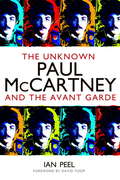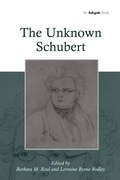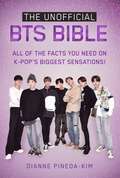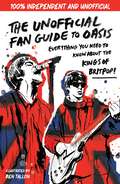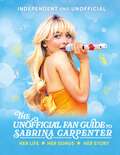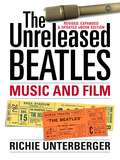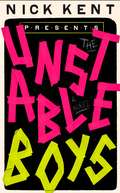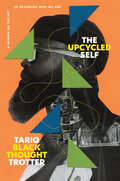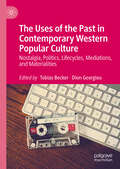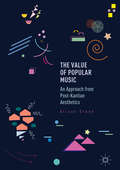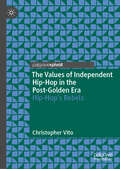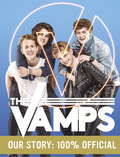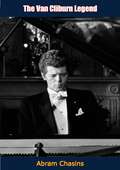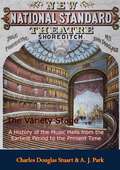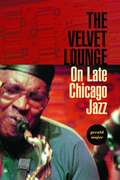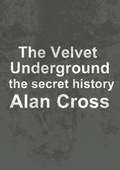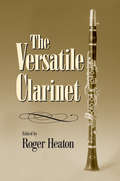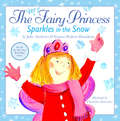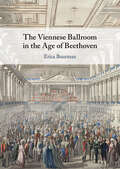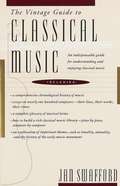- Table View
- List View
The Unknown Paul McCartney
by Ian PeelInternationally acclaimed, knighted and immortalised in music's pantheon, Paul McCartney nevertheless remains one of the least fully appreciated of modern icons.Throughout his career, McCartney has initiated and participated in projects that have taken him very far away from the kind of music associated with his career in The Beatles, in Wings, and as a solo artist. From as far back as the 1960s there have been experimental solo projects, both under his own name and incognito. These include the legendary 'Carnival of Light' sixties freak-out, the Percy Thrillington diversion in the 70s, techno, ambient and chill-out releases as The Fireman, pure noise performance art as well as less-publicised activity, much of which Ian Peel now reveals in depth in print for the first time.What emerges is a unique, critical insight into an apparently over-familiar public figure - Paul McCartney, avant-garde musician. Undertaking extensive research for this book, Ian Peel interviewed many of McCartney's intimate musical associates from this less-familiar side of his career, including:Super Furry Animals - on their carrot chewing percussion and electronic sound collage collaborations.Youth - the three-times BRIT-nominated producer speaks in depth for the first time ever on his two albums of techno ambient and chill-out recorded with McCartney as The Fireman.Nitin Sawhney - on McCartney's first tentative steps into drum & bass, holed up in Sawhney's London bedsit.Richard Hewson - breaks a 20-year silence on the Thrillington project and pseudonym.David Vaughan - the renowned psychedelic artist and organiser of 60s 'happenings' airs his strong views on Carnival of Light, The Beatles' most legendary unreleased track.Other interviewees include Yoko Ono, bassist Herbie Flowers, Gong's Daevid Allen, Frank Zappa's guitarist Mike Keneally, JJ Jeczalik (Art of Noise) and members of Wings.
The Unknown Schubert
by LorraineByrne BodleyFranz Schubert (1797-1828) is now rightly recognized as one of the greatest and most original composers of the nineteenth century. His keen understanding of poetry and his uncanny ability to translate his profound understanding of human nature into remarkably balanced compositions marks him out from other contemporaries in the field of song. Schubert was one of the first major composers to devote so much time to song and his awareness that this genre was not rated highly in the musical hierarchy did not deter him, throughout a short but resolute and hard-working career, from producing songs that invariably arrest attention and frequently strike a deeply poetic note. Schubert did not emerge as a composer until after his death, but during his short lifetime his genius flowered prolifically and diversely. His reputation was first established among the aristocracy who took the art music of Vienna into their homes, which became places of refuge from the musical mediocrity of popular performance. More than any other composer, Schubert steadily graced Viennese musical life with his songs, piano music and chamber compositions. Throughout his career he experimented constantly with technique and in his final years began experiments with form. The resultant fascinating works were never performed in his lifetime, and only in recent years have the nature of his experiments found scholarly favor. In The Unknown Schubert contributors explore Schubert's radical modernity from a number of perspectives by examining both popular and neglected works. Chapters by renowned scholars describe the historical context of his work, its relation to the dominant artistic discourses of the early nineteenth century, and Schubert's role in the paradigmatic shift to a new perception of song. This valuable book seeks to bring Franz Schubert to life, exploring his early years as a composer of opera, his later years of ill-health when he composed in the shadow of death, and his efforts to reflect i
The Unofficial BTS Bible: All of the Facts You Need on K-Pop's Biggest Sensations!
by Dianne Pineda-KimJoin BTS&’s ARMY and learn the history of the international K-POP sensation! BTS (aka Bangtan Sonyeondan) has become one of K-POP&’s most well-known singing groups. The seven-member Korean boy band formed in 2013 and has slowly grown to worldwide fame through their music. Despite slow beginnings, the K-POP group now has millions of listeners around the world. They led the Korean Wave of music into the United States in 2017, and as of 2019, they are the only Korean group to top the US Billboard 200, and the first group since the Beatles to have three number-one albums in less than a year. BTS is also known for breaking the mold of K-POP, including social topics such as mental health, individualism, and social commentary in their hip-hop lyrics. TIME Magazine named the Korean Pop group as one of the 25 most influential people on the internet and named them as one of TIME's 100 most influential people of 2019. In the BTS Bible, you&’ll learn everything you could want to know about the sensational singing group, including: Individual member profilesBand concept and styleHistory of their six-year rise to fameChart-topping songs and videosInterviews with worldwide fans and music expertsAnd more! Don&’t get left behind in the wake of the BTS success. Read all about the K-POP group that is changing the face of international music in the Unofficial BTS Bible.
The Unofficial Fan Guide to Oasis: Everything you need to know before the 2025 tour!
by Eddie RobsonThe Unofficial Oasis Fan Guide tells the story of the most electric rock band in the world. Discover their rise to fame, how family drama interfered, the disastrous break up and everything there is to know about the reunion tour in this unofficial guide to Oasis.With profiles on all the band members (former and current), the history of Manchester's music scene, oasis songs to learn on the guitar, and everything we know about the 2025 tour, this is a must-have book for Oasis fans new and (not-so) old!
The Unofficial Fan Guide to Oasis: Everything you need to know before the 2025 tour!
by Eddie RobsonThe Unofficial Oasis Fan Guide tells the story of the most electric rock band in the world. Discover their rise to fame, how family drama interfered, the disastrous break up and everything there is to know about the reunion tour in this unofficial guide to Oasis.With profiles on all the band members (former and current), the history of Manchester's music scene, oasis songs to learn on the guitar, and everything we know about the 2025 tour, this is a must-have book for Oasis fans new and (not-so) old!
The Unofficial Fan Guide to Sabrina Carpenter
by Hannah CatherInside this brand-new book about Sabrina Carpenter, you'll find everything you could ever want to know about the world's hottest new stars. Find out about how Sabrina grew up, her early days of stardom with Disney, all about every one of her pop albums, and her amazing success with Espresso, Please Please Please and the Short 'n' Sweet Tour. Find out where her biggest hits came from, read her quotes, and see how you can get her look. You'll also find out about her collabs, her partners, and her super-cute dog Goodwin. You can even discover what might lie in Sabrina's future as she takes over the world of pop. If you're a Sabrina superfan, this book is for you!
The Unofficial Guide to the Eurovision Song Contest: The must-have guide for Eurovision 2023!
by Malcolm MackenzieThe must-have guide for Eurovision fans! Packed full of trivia, party games, high scores and nil points. Plus 32 pages of full colour photos.Hello, bonjour, Hola! It's Eurovision calling and what better way to celebrate the flamboyant show than with this ultimate (and unofficial) guide to the biggest singing contest in the world!How well do you know the Eurovision Song Contest? With this unofficial guide you'll know your Conchita Wurst's from your Alexander Rybanks, why we all love Kalush Orchestra, what made Sam Ryder the nation's sweetheart and which band takes top of the polls - Abba vs. Måneskin - or could it even be Scooch?This ultimate guide recaps the highs and lows of the decades old contest including its bangers and ballads, most shocking moments, photos of the worst dressed acts, top scoring countries - and those who score nil points, and plenty of games to play at your Eurovision party. Eurovision bingo anyone?
The Unreleased Beatles
by Richie Unterberger"The Unreleased Beatles: Music and Film" is a mammoth 350,000-word guide to the incredible wealth of music the Beatles recorded that they did not release, as well as musical footage of the group that hasn't been made commercially available. This revised and expanded ebook edition adds about 30,000 words to the print edition, including coverage of all known material by the group that has gone into circulation since the book's original 2006 release. There is also updated information about the music and film detailed in the original edition, including the appearance of some previously unissued recordings on official releases. "The Unreleased Beatles: Music and Film" examines all of their unreleased studio outtakes, BBC radio recordings from 1962-65, live concert performances, home demos, private tapes, fan club Christmas recordings, and other informal recordings done outside of EMI studios that have escaped into circulation. Chronologically sequenced entries for all the Beatles' unreleased recordings of note from 1957 to 1970 are here, as well as all the unreleased Beatles musical video footage of note from 1961 to 1970. Also included are overviews of songs composed by the Beatles that were never recorded by the group, but given away to other artists; recordings known or rumored to have been made by the group that haven't yet circulated; Beatles compositions never recorded by anyone; coverage of music the group didn't release while active, but later put out on albums such as "The Beatles at the Hollywood Bowl," "Live! At the Star-Club," "Live at the BBC Vol. 1 & 2," "Let It Be. . . Naked," and the "Anthology" volumes; and a history of Beatles bootlegs. "The Unreleased Beatles: Music and Film" is written with lively critical, descriptive analysis emphasizing the music and its most human, artistic qualities--and not just where and when the recordings were made. The book won a 2007 Association for Recorded Sound Collections Award for Excellence in Historical Recorded Sound Research in the "Best Discography" division of the "Best Research in Recorded Rock Music" category.
The Unstable Boys: A Novel
by Nick KentLondon 1968:The Unstable Boys are the name on every music insider's lips and tipped to follow in the footsteps of the Beatles and the Rolling Stones. This is their chance to hit the bigtime. They don't know they're about to be obliterated by a series of tragedies and a chaotic breakup that puts paid to the band's starry-eyed dreams of stratospheric success. One day you're the dog's bollocks; the next day you're a nobody - fame is a fickle friend.London 2016:Bestselling crime writer Michael Martindale has reached breaking point. Estranged from his wife and children following the very public fallout of his disastrous affair, he is alone, with only his self-pity to keep him warm at night. Until he makes the mistake of publicly declaring his admiration for his teenage musical obsession, the Unstable Boys. When the band's twisted and feral frontman, the Boy, turns up on his doorstep, Martindale quickly learns that sometimes you should be careful what you wish for.Razor-sharp and laced with a caustic wit, The Unstable Boys is a dark comic caper with an unmistakeable musicality from legendary music journalist Nick Kent.
The Unstable Boys: A Novel
by Nick KentLondon 1968:The Unstable Boys are the name on every music insider''s lips and tipped to follow in the footsteps of the Beatles and the Rolling Stones. This is their chance to hit the bigtime. They don''t know they''re about to be obliterated by a series of tragedies and a chaotic breakup that puts paid to the band''s starry-eyed dreams of stratospheric success. One day you''re the dog''s bollocks; the next day you''re a nobody - fame is a fickle friend.London 2016:Bestselling crime writer Michael Martindale has reached breaking point. Estranged from his wife and children following the very public fallout of his disastrous affair, he is alone, with only his self-pity to keep him warm at night. Until he makes the mistake of publicly declaring his admiration for his teenage musical obsession, the Unstable Boys. When the band''s twisted and feral frontman, the Boy, turns up on his doorstep, Martindale quickly learns that sometimes you should be careful what you wish for.Razor-sharp and laced with a caustic wit, The Unstable Boys is a dark comic caper with an unmistakeable musicality from legendary music journalist Nick Kent.
The Upcycled Self: A Memoir on the Art of Becoming Who We Are
by Tariq Trotter&“One of hip-hop&’s greatest MCs, unpacking his harrowing, remarkable journey in his own words, with enough insights for two lifetimes.&”—Lin-Manuel Miranda, award-winning songwriter, producer, director, and creator of In the Heights and Hamilton From one of our generation&’s most powerful artists and incisive storytellers comes a brilliantly crafted work about the art—and war—of becoming who we are.upcycle verbup·cy·cle ˈəp-ˌsī-kəl: to recycle (something) in such a way that the resulting product is of a higher value than the original item: to create an object of greater value from (a discarded object of lesser value)Today Tariq Trotter—better known as Black Thought—is the platinum-selling, Grammy-winning co-founder of The Roots and one of the most exhilaratingly skillful and profound rappers our culture has ever produced. But his story begins with a tragedy: as a child, Trotter burned down his family&’s home. The years that follow are the story of a life snatched from the flames, forged in fire. In The Upcycled Self, Trotter doesn&’t only narrate a riveting and moving portrait of the artist as a young man, he gives readers a courageous model of what it means to live an examined life. In vivid vignettes, he tells the dramatic stories of the four powerful relationships that shaped him—with community, friends, art, and family—each a complex weave of love, discovery, trauma, and loss. And beyond offering the compellingly poetic account of one artist&’s creative and emotional origins, Trotter explores the vital questions we all have to confront about our formative years: How can we see the story of our own young lives clearly? How do we use that story to understand who we&’ve become? How do we forgive the people who loved and hurt us? How do we rediscover and honor our first dreams? And, finally, what do we take forward, what do we pass on, what do we leave behind? This is the beautifully bluesy story of a boy genius&’s coming-of-age that illuminates the redemptive power of the upcycle.
The Uses of the Past in Contemporary Western Popular Culture: Nostalgia, Politics, Lifecycles, Mediations, and Materialities
by Tobias Becker Dion GeorgiouThis book takes an interdisciplinary approach to understanding the different ways in which the past remains present in Western popular culture in the twenty-first century. It combines theoretical analyses with case study-based chapters focusing on examples from Britain, the US, and Germany, among other countries. In doing so, it pushes beyond a simplistic and monolithic conception of what ‘nostalgia’ is to allow for a more nuanced and varied conceptualisation of this phenomenon, and to also incorporate other ways of understanding the invoking or inclusion of different histories within cultural objects, formats, and practices.
The Value of Popular Music
by Alison StoneIn this book, Alison Stone argues that popular music since rock-'n'-roll is a unified form of music which has positive value. That value is that popular music affirms the importance of materiality and the body, challenging the long-standing Western elevation of the intellect above all things corporeal. Stone also argues that popular music's stress on materiality gives it aesthetic value, drawing on ideas from the post-Kantian tradition in aesthetics by Hegel, Adorno, and others. She shows that popular music gives importance to materiality in its typical structure: in how music of this type handles the relations between matter and form, the relations between sounds and words, and in how it deals with rhythm, meaning, and emotional expression. Extensive use is made of musical examples from a wide range of popular music genres. This book is distinctive in that it defends popular music on philosophical grounds, particularly informed by the continental tradition in philosophy. >
The Values of Independent Hip-Hop in the Post-Golden Era: Hip-Hop’s Rebels
by Christopher VitoUtilizing a mixed-methods approach, this book uncovers the historical trajectory of U.S. independent hip-hop in the post-golden era, seeking to understand its complex relationship to mainstream hip-hop culture and U.S. culture more generally. Christopher Vito analyzes the lyrics of indie hip-hop albums from 2000-2013 to uncover the dominant ideologies of independent artists regarding race, class, gender, sexual orientation, and social change. These analyses inform interviews with members of the indie hip-hop community to explore the meanings that they associate with the culture today, how technological and media changes impact the boundaries between independent and major, and whether and how this shapes their engagement with oppositional consciousness. Ultimately, this book aims to understand the complex and contradictory cultural politics of independent hip-hop in the contemporary age.
The Vamps: 100% Official
by The VampsSince forming on YouTube in 2012, The Vamps have become one of the biggest bands in the UK. They have travelled the world with massive arena tours, sold hundreds of thousands of records, and gained legions of amazing and devoted fans. They have gone from schoolboys to superstardom in just a few years, and for the first time Connor, Brad, Tristan and James tell their story. From life on the road to dealing with their new-found fame, nothing is off-limits.Featuring exclusive behind-the-scenes photography, this is a fully-illustrated joint autobiography: the perfect book for any Vamps fan.
The Vamps: 100% Official
by The VampsSince forming on YouTube in 2012, The Vamps have become one of the biggest bands in the UK. They have travelled the world with massive arena tours, sold hundreds of thousands of records, and gained legions of amazing and devoted fans. They have gone from schoolboys to superstardom in just a few years, and for the first time Connor, Brad, Tristan and James tell their story. From life on the road to dealing with their new-found fame, nothing is off-limits.Featuring exclusive behind-the-scenes photography, this is a fully-illustrated joint autobiography: the perfect book for any Vamps fan.
The Vamps: Official Book
by The VampsSince forming on YouTube in 2012, The Vamps have become one of the biggest bands in the UK. They have travelled the world with massive arena tours, sold hundreds of thousands of records, and gained legions of amazing and devoted fans. They have gone from schoolboys to superstardom in just a few years, and for the first time Connor, Brad, Tristan and James tell their story. From life on the road to dealing with their new-found fame, nothing is off-limits.Featuring exclusive behind-the-scenes photography, this is a fully-illustrated joint autobiography: the perfect book for any Vamps fan.
The Van Cliburn Legend
by Abram ChasinsFriend of Van Cliburn, pianist, composer, and radio executive Abram Chasins describes Cliburn's music career leading up to his win at the 1958 Tchaikovsky Competition, which made him world famous, and the year of concerts and performances which followed.—Goodreads.
The Variety Stage: A History of the Music Halls from the Earliest Period to the Present Time
by A. J. Park Charles Douglas StuartMusic hall was a type of British theatrical entertainment that was popular from the early Victorian era, beginning around 1850. It faded away after 1918 as the halls rebranded their entertainment as variety. Perceptions of a distinction in Britain between bold and scandalous Music Hall and subsequent, more respectable Variety differ. Music hall involved a mixture of popular songs, comedy, speciality acts, and variety entertainment. The term is derived from a type of theatre or venue in which such entertainment took place. In North America vaudeville was in some ways analogous to British music hall, featuring rousing songs and comic acts.“To the general reader, as well as to the thoughtful observer of the social institutions of the English people, the story of the rise, progress and present condition of Variety Stage in this country presents features of peculiar attraction.In The History of the Variety Stage they have endeavoured to deal in a bright, chatty and anecdotal manner, not only with the Music Halls of the past and present, but also with the picturesque and variegated profession which has called them into existence, and while presenting to the statistician, the antiquarian, and the student of domestic history, a substantial and painstaking work of research, they have tried to render at the same time a graphic panorama of the variety world as it was and as it is today.”-Preface.
The Velvet Lounge: On Late Chicago Jazz
by Gerald MajerTroubled urban neighborhoods and jazz-club havens were the backdrop of Gerald Majer's life growing up in sixties and seventies Chicago. The Velvet Lounge, an original hybrid of memoir, biography, and musical description, reflects this history and pursues a sustained meditation on jazz along with a probing exploration of race and class and how they defined the material and psychic divides of a city. With the instrument of a supple, lyrical prose style, Majer elaborates the book's themes through literary and intellectual forays as carefully constructed and as passionately articulated as a jazz master's solo. Throughout the work, issues of identity and culture, art and politics achieve a rare immediacy, as does the music itself.In portraits of Jimmy Smith, Gene Ammons, Sonny Stitt, Sun Ra, and others, Gerald Majer conveys the drama and artistry of their music as well as the personal hardships many of them endured. Vivid descriptions and telling historical anecdotes explore the music's richness through a variety of political, social, and philosophical contexts. The Velvet Lounge, named after the famous Chicago club, is also one of the few works to consider the music of such avant-garde jazz musicians as Fred Anderson, Andrew Hill, and Roscoe Mitchell. In doing so, Majer builds a bridge from the traditionalist view of jazz to the world of contemporary innovators, casts a new light on the music and its makers, and traces connections between jazz art and postmodernist thought. Present throughout Majer's spirited encounters with the worlds of jazz is Majer himself. We hear and appreciate the music through his individual sensibilities and experiences. Majer recounts growing up in racially divided Chicago—his trips to the famed Maxwell Street market, his wanderings among its legendary jazz clubs, his riding the El, and his working in a jukebox factory. We witness his awakening to the music at a crossroads of the intimately personal and the intellectually provocative.
The Velvet Underground: the secret history
by Alan CrossAlan Cross is the preeminent chronicler of popular music.Here he provides the history of Lou Reed and The Velvet Underground.This look at the band—"The First Alternative Band"—is based on the audiobook of the same name.
The Versatile Clarinet
by Roger HeatonFirst Published in 2006. Routledge is an imprint of Taylor & Francis, an informa company.
The Very Fairy Princess Sparkles in the Snow
by Julie Andrews Emma Walton Hamilton Christine DavenierThe Winter Wonderland Festival is just around the corner, and Gerry knows this is her moment to SHINE. She's the most enthusiastic singer around, so she's certain her music teacher will choose her to perform the solo. She takes every opportunity to show him her VERY best voice-during rehearsal, during lunchtime, and even during recess. When a professional singer is given the solo instead, Gerry is crushed...but as the snow begins to fall, she finds a way to get her SPARKLE back! The mother-daughter team of Julie Andrews and Emma Walton Hamilton adds a sparkly seasonal story to their #1 New York Times bestselling series.
The Viennese Ballroom in the Age of Beethoven
by Erica BuurmanThe repertoire of the early Viennese ballroom was highly influential in the broader histories of both social dance and music in nineteenth-century Europe. Yet music scholarship has traditionally paid little attention to ballroom dance music before the era of the Strauss dynasty, with the exception of a handful of dances by Haydn, Mozart and Beethoven. This book positions Viennese social dances in their specific performing contexts and investigates the wider repertoire of the Viennese ballroom in the decades around 1800, most of which stems from dozens of non-canonical composers. Close examination of this material yields new insights into the social contexts associated with familiar dance types, and reveals that the ballroom repertoire of this period connected with virtually every aspect of Viennese musical life, from opera and concert music to the emerging category of entertainment music that was later exemplified by the waltzes of Lanner and Strauss.
The Vintage Guide to Classical Music: An Indispensable Guide for Understanding and Enjoying Classical Music
by Jan Swafford<p>The most readable and comprehensive guide to enjoying over five hundred years of classical music -- from Gregorian chants, Johann Sebastian Bach, and Wolfgang Amadeus Mozart to Johannes Brahms, Igor Stravinsky, John Cage, and beyond. <p>The Vintage Guide to Classical Music is a lively -- and opinionated -- musical history and an insider's key to the personalities, epochs, and genres of the Western classical tradition. Among its features: <p> <li>chronologically arranged essays on nearly 100 composers, from Guillaume de Machaut (ca. 1300-1377) to Aaron Copland (1900-1990), that combine biography with detailed analyses of the major works while assessing their role in the social, cultural, and political climate of their times; <li>informative sidebars that clarify broader topics such as melody, polyphony, atonality, and the impact of the early-music movement; <li>a glossary of musical terms, from a cappella to woodwinds; <li>a step-by-step guide to building a great classical music library.</li> <p> <p>Written with wit and a clarity that both musical experts and beginners can appreciate, The Vintage Guide to Classical Music is an invaluable source-book for music lovers everywhere.</p>
